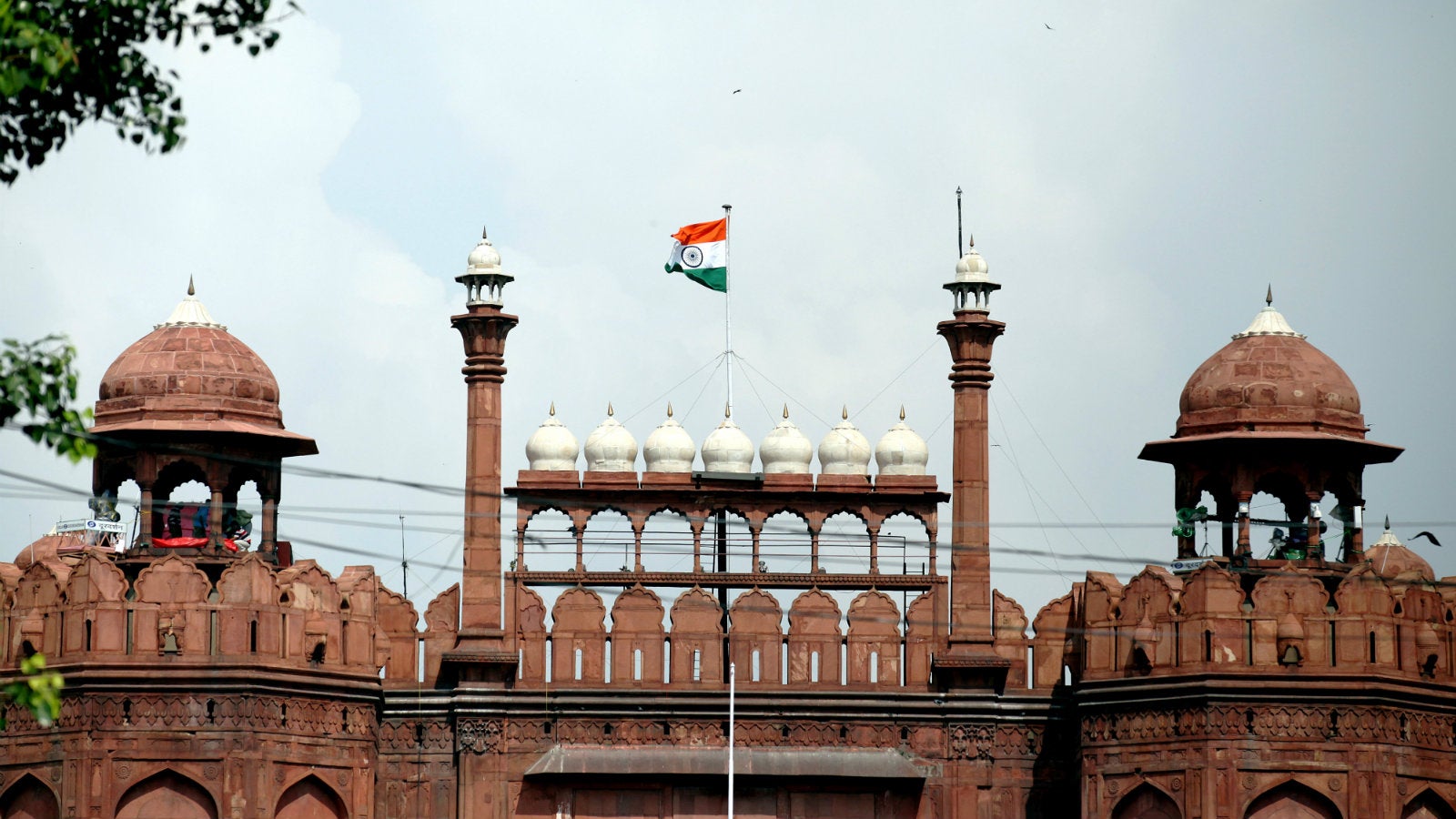A Q&A with India’s tourism minister: “If somebody spends the money, why shouldn’t he get branding?”
In tapping the cement maker Dalmia Bharat to upgrade Delhi’s historic Red Fort, the Indian government has sparked a national debate over who should be in charge of the country’s long-neglected monuments.


In tapping the cement maker Dalmia Bharat to upgrade Delhi’s historic Red Fort, the Indian government has sparked a national debate over who should be in charge of the country’s long-neglected monuments.
The Adopt a Heritage scheme, under which private firms have been invited to make historic sites more tourist-friendly, was announced in September 2017. But the involvement of a company with no experience in heritage management or conservation has historians and conservation experts concerned about accountability, besides the risk of having India’s most iconic structures marred by unsightly branding.
Alphons Kannanthanam, the minister of state for tourism, argues that this won’t be a problem.
In a conversation with Quartz, he explained how the Archaeological Society of India (ASI) will supervise the scheme, and why the government thinks important sites like the Red Fort are a good place to start.
Edited excerpts:
Why did you choose to embark on this scheme with some of India’s most iconic monuments first?
The whole idea is it’s iconic sites which bring in the big numbers, and these are India’s pride. So I think we need to start with the big things and sort out those monuments first. But we are not ending with that. We now have 95 sites on our website which are up for adoption. So we believe that we need to dramatically change the way these things are on the ground, and it would be good if the community owns a part of the monuments, India’s heritage. We’ve got about 5,000 years of heritage but I think there’s very little involvement of the public in what we are doing. And unless we own up the monument it won’t be protected.
There are already a number of private organisations, like INTACH and the Aga Khan Trust that have done a lot of conservation and heritage work. Did the government approach them for this scheme or do you see any role for them?
We have put out on our site that we have a scheme like this so anybody, including INTACH, is completely free to approach us and submit a vision plan. And then we listen to them, we listen to their presentation and they could also be adopting heritage. We don’t force anybody. Anybody who comes forward with a proposal, we ask them to prepare a detailed plan, make presentation, and whoever we believe has the best plan, we take them.
What about the indemnity clause (pdf) that holds the monument mitra [the government’s term for the adoptive company] “harmless” against any loss, costs, and expenses?
I don’t think it’s got any relevance because the monument mitra is not going to touch the monument at all. They are only doing peripheral services.
And the benefit for the monument mitras is branding, right?
Only with the ASI’s permission would they be able to put out possibly a 5cm by 3cm board, I’m just telling you (as an example). See, ASI is a very conservative organisation. They’re not going to allow any huge hoardings. It will be so discreet that it will be very difficult to make out where the boards are.
If somebody spends the money, why shouldn’t he get a branding? But that branding obviously will not be like putting up huge hoardings. They can use it in the literature that they’re looking after infrastructure for X monument.
What role will the ASI play once the monument is adopted? What changes and what stays the same?
Nothing changes. ASI will control the monument and anything to be done, even the peripheral intervention, everything needs to have ASI’s approval. Now whatever is submitted in the vision document, those works have the approval of the ASI and that will all be done under the supervision of the ASI.
In the case of certain monuments, like the Red Fort, there’s a need for restoration and conservation work. Does this scheme affect that in any way?
No, the mitra will not be doing any restoration work. That would be done only by the ASI.